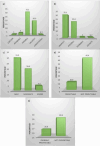Adverse drug reactions and drug-related problems with supportive care medications among the oncological population
- PMID: 39249610
- PMCID: PMC11383904
- DOI: 10.1007/s12672-024-01300-w
Adverse drug reactions and drug-related problems with supportive care medications among the oncological population
Abstract
Aim: The current study emphasizes the impact of adverse drug reactions (ADRs) and Drug-Related Problems (DRPs) caused by supportive care medications administered with chemotherapy.
Method: This is a longitudinal observational study carried out at the Ramaiah Medical College Hospital in Bengaluru, Karnataka, India, at the Department of Oncology. The data was recorded using a specifically created data collecting form. Based on the PCNE (Pharmaceutical Care Network Europe), DRPs are identified. The WHO probability scale, Modified Hartwig and Siegel for ADR severity assessment, Naranjo's algorithm for causality assessment, Rawlins and Thompson for predictability assessment, and Modified Shumock and Thornton for preventability assessment were all utilized. The OncPal guideline was considered in terms of the precision of supportive care medications regarding the reduction of ADRs in cancer patients.
Result: We enrolled 302 patients,166 (55%) female and 136 (45%) male (SD 14.378) (mean 49.97), patients with one comorbidity 59(19.6%) and multimorbidity (two or more) 45(14.9%), the DRPs identified were found to be 153 (50.6%); only P2 (safeties of drug therapy PCNE) were considered in this study. ADRs which are identified 175(57.9%) contributed/caused by the supportive care medications. WHO probability scale: 97 (32.1%) possible and 60 (19.9%) unlikely; Naranjo's algorithm: 97 (32.1%) unlikely and 69 (22.8%) possible; ADR severity assessment scale (Modified Hartwig and Siegel): 95 (31.5%) mild and 63 (20.9%) moderates; Rawlins and Thompson for determining predictability of an ADR: 33 (10.9%) predictable and 137 (45.5%) non-predictable; and Modified Shumock and Thornton for determining preventability of an ADR: 81 (26.8%) probably preventable and 90 (29.8%) non-preventable. The statistical comparison through preforming t-test and measuring Chi-Square between group with ADRs and without ADRs shows in some variables, significantly (Alcohol consumption status, P = .019) and Easter Cooperative Oncology Group (ECOG) performance status P < 0.001.
Conclusion: Comprehensive assessment of supportive medications in cancer patients would enhance the patient management and therapeutic outcome. The potential adverse drug reactions (ADRs) caused by supportive care medications can contribute to longer hospital stays and interact with the systemic anti-cancer treatment. The health care professionals should be informed to monitor the patients clinically administered with supportive medications.
Keywords: Adverse drug reaction; Drug-related problem; OncPal guideline; PCNE classification; Supportive care medication.
© 2024. The Author(s).
Conflict of interest statement
The authors declare no competing interests.
Figures
Similar articles
-
Study of pattern & distribution of adverse drug reactions in acute coronary syndrome patients in a tertiary care hospital.Indian J Med Res. 2022 Jul;156(1):111-121. doi: 10.4103/ijmr.IJMR_1275_20. Indian J Med Res. 2022. PMID: 36510903 Free PMC article.
-
Pattern of adverse drug reactions due to cancer chemotherapy in a tertiary care hospital in South India.Perspect Clin Res. 2015 Apr-Jun;6(2):109-15. doi: 10.4103/2229-3485.154014. Perspect Clin Res. 2015. PMID: 25878957 Free PMC article.
-
Adverse Drug Reactions in Hospitalized Pediatric Patients: A Prospective Observational Study.Indian J Pediatr. 2016 May;83(5):414-9. doi: 10.1007/s12098-015-2002-1. Epub 2016 Feb 26. Indian J Pediatr. 2016. PMID: 26916890
-
Adverse Drug Reactions in an Oncological Population: Prevalence, Predictability, and Preventability.Oncologist. 2019 Sep;24(9):e968-e977. doi: 10.1634/theoncologist.2018-0476. Epub 2019 Mar 4. Oncologist. 2019. PMID: 30833488 Free PMC article.
-
Causality, Severity, Preventability and Predictability Assessments Scales for Adverse Drug Reactions: A Review.Cureus. 2024 May 9;16(5):e59975. doi: 10.7759/cureus.59975. eCollection 2024 May. Cureus. 2024. PMID: 38854273 Free PMC article. Review.
References
-
- Ahmed KO, Muddather HF, Yousef BA. Pharmaceutical Care Network Europe (PCNE) drug-related problems classification version 9.1: first implementation in Sudan. J Pharm Res Int. 2021. 10.9734/jpri/2021/v33i59a34321.10.9734/jpri/2021/v33i59a34321 - DOI
-
- Nabil S, El-Shitany NA, Shawki MA, et al. A pharmaceutical care plan to minimize the incidence of potential drug-related problems in cancer patients. Egypt J Hosp Med. 2022;89:4874–80. 10.21608/EJHM.2022.260758.10.21608/EJHM.2022.260758 - DOI
LinkOut - more resources
Full Text Sources
Research Materials

